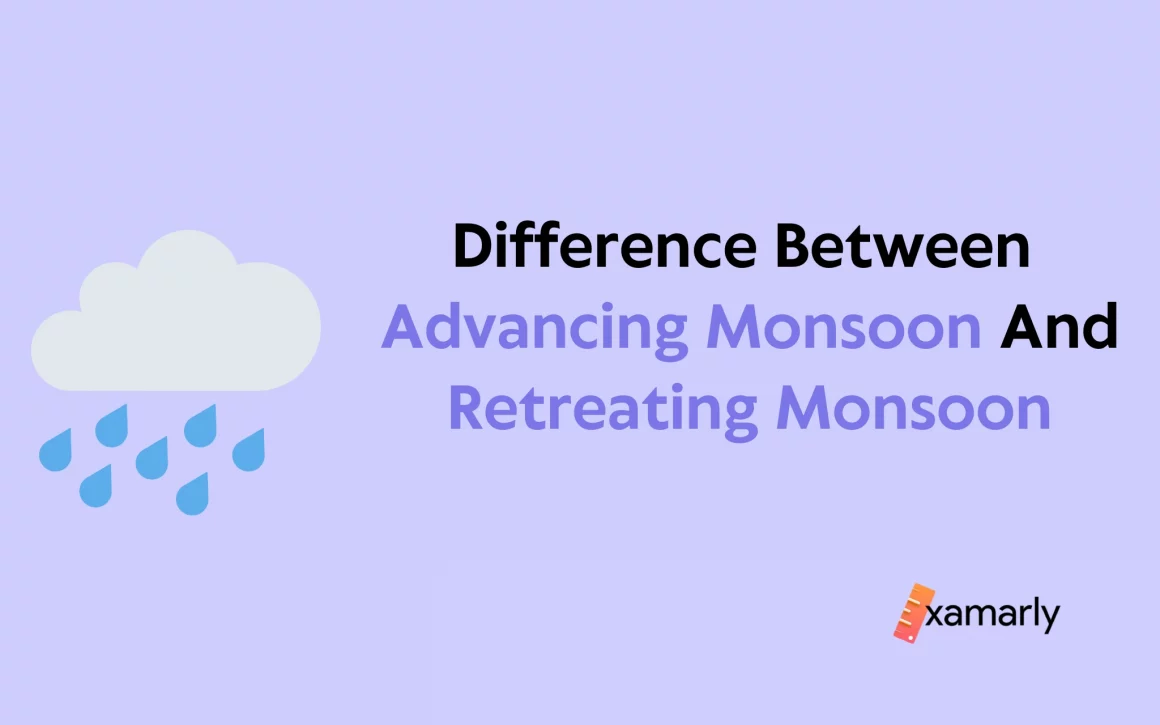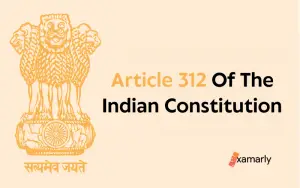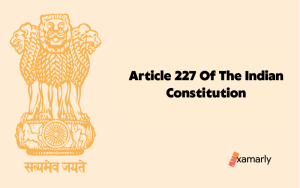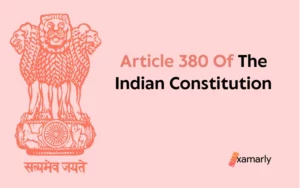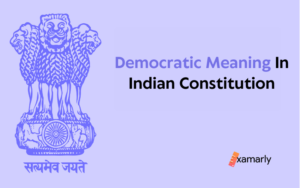An Overview
Monsoon season is one of the most important weather patterns in India, as it brings the much-needed rainfall for the agriculture done within the country. However, the monsoon has two distinct phases, the Advancing monsoon and the Retreating monsoon, each with its own characteristics and impact on the country.
In this blog post, we will take a closer look at the difference between Advancing monsoon and Retreating monsoon, including the timing, wind patterns, and effects on the environment and society.
We will also briefly discuss the similarities between the two phases and the importance of understanding the monsoon for forecasting the weather and mitigating any potential negative effects.
Whether you are an aspirant, a weather enthusiast, or just someone who wants to know more about the monsoon in India, this blog post will provide valuable information and insights.
- An Overview
- Understanding The Pattern Of Monsoon In India
- Advancing Monsoon
- Retreating Monsoon
- Difference Between Advancing And Retreating Monsoon
- Features Common To Advancing Monsoon and Retreating Monsoon
- Summing Up
- FAQs Related To The Difference Between Advancing and Retreating Monsoon
- When does the Advancing monsoon start in India?
- What are the characteristics of the Advancing monsoon?
- When does the Retreating monsoon start in India?
- What are the characteristics of the Retreating monsoon?
- Is there a difference between Advancing and Retreating monsoon?
- What is the importance of the monsoon for India?
Understanding The Pattern Of Monsoon In India
The monsoon in India is a seasonal weather pattern that brings heavy rainfall to the country. The monsoon has two phases. These two phases are known as the Advancing monsoon and the Retreating monsoon.
The monsoon is crucial for agriculture in India, as it provides the necessary rainfall for crops to grow. However, it also has its drawbacks, as heavy rainfall can cause damage to infrastructure and lead to flooding and landslides.
Overall, the monsoon in India is a complex weather pattern that has a significant impact on the economy and society of the country. Understanding the Advancing and Retreating phases of the monsoon is crucial for forecasting the weather and mitigating any potential negative effects.
Let us now look at these two phases of monsoon in detail and also understand the difference between Advancing monsoon and Retreating monsoon.
Advancing Monsoon
The Advancing monsoon is the first phase of the monsoon season in India. It begins in late May or early June. This is the time when the monsoon winds shift and start blowing from the southwest towards the Indian subcontinent.
The Advancing monsoon starts at the time when the first rains of the season begin to fall in southern India, and then gradually move northwards. It typically brings heavy rainfall and increased humidity, which can lead to flooding and landslides in some areas.
Characteristics Of Advancing Monsoon
- The Advancing monsoon typically begins in southern India and gradually moves northwards.
- It brings heavy rainfall and increased humidity to the regions it affects.
- The Advancing monsoon can cause flooding and landslides in some areas due to the heavy rainfall.
- It marks the beginning of the rainy season in India.
Important Facts About Advancing Monsoon
- The monsoon is crucial for agriculture in India, as it provides the necessary rainfall for crops to grow.
- The Advancing monsoon typically lasts for about 2-3 months.
- The date of the onset of the monsoon is important for farmers to plan their crop cycle.
- The Indian Meteorological Department (IMD) is responsible for forecasting and monitoring the monsoon.
- The monsoon is a complex weather pattern, and its timing and intensity can vary from year to year.
Retreating Monsoon
The Retreating monsoon, on the other hand, starts in September and lasts until October. It is the second phase of the monsoon season in India. During this phase, the wind patterns shift again and the monsoon winds start blowing from the northeast towards the Bay of Bengal. As the monsoon winds retreat, the rainfall gradually decreases and the humidity drops. This marks the end of the rainy season in India, and the beginning of a dry, cool period.
Characteristics Of Retreating Monsoon
- The monsoon winds retreat during this phase.
- During this phase, the rainfall gradually decreases, and humidity drops.
- It marks the end of the rainy season in India.
- Retreating monsoon marks the beginning of a dry, cool period.
Important Facts About Retreating Monsoon
- The Retreating monsoon typically lasts for about 1-2 months.
- The date of the retreat of the monsoon is important for farmers to plan their crop cycle.
- The Indian Meteorological Department (IMD) is responsible for forecasting and monitoring the monsoon.
- The monsoon is a complex weather pattern, and its timing and intensity can vary from year to year.
- The Retreating monsoon can cause water scarcity in some areas due to a lack of rainfall.
Difference Between Advancing And Retreating Monsoon
| Advancing Monsoon | Retreating Monsoon |
|---|---|
| It marks the beginning of the rainy season. | It marks the end of the rainy season. |
| It begins in late May or early June and lasts until the month of September. | It begins in Mid-September or October and lasts until November. |
| The monsoon winds blow from the Southwest and proceed towards the North. | The monsoon winds blow from the Northern Plains and Northeast and start retreating downwards. |
| The wind movement is from the sea towards the land. | The winds blow from the land to the sea. |
| Mostly moist winds blow during this phase of the monsoon. | Dry winds blow during this phase of the monsoon. |
| The Arabian Sea branch and the Bay of Bengal branch are the two main branches of wind in this phase of monsoon. | The wind has only one branch in this phase of the monsoon. |
| It brings heavy rainfall and increased humidity along with thunderstorms sometimes. | The rainfall gradually decreases and humidity drops. Light thunder and lightning are observed at times. |
| It can cause flooding and landslides in some areas. | It can cause water scarcity in some areas due to a lack of rainfall. |
| Advancing monsoon causes maximum rainfall that is received by most of India. | Retreating monsoon causes rainfall that is received mainly along the Eastern Coast of India. |
Features Common To Advancing Monsoon and Retreating Monsoon
Now that we have taken a look at the difference between Advancing monsoon and Retreating monsoon, we will also consider some similarities that are shared by the two phases of monsoon in India.
- Both Advancing monsoon and Retreating monsoon are types of monsoons. Both these two phases of the monsoon season are found in India.
- Both phases of monsoon are dependent on the wind patterns. Advancing monsoon wind patterns shift and blow from the southwest towards the Indian subcontinent while Retreating monsoon wind patterns shift and blow from the northeast towards the Bay of Bengal.
- Both have an impact on the economy of the country and society.
- Both are crucial for farmers to plan their crop cycles.
- Both are monitored by Indian Meteorological Department (IMD).
- Both can vary in timing and intensity from year to year.
- Both are complex weather patterns.
- Both are important for agriculture in the country, providing the necessary rainfall for crop growth.
Summing Up
In this article, we learnt about the monsoon pattern in India. The article dealt in detail with the two phases of monsoon, that is, Advancing monsoon and Retreating monsoon. We also gained an understanding of the features and facts related to advancing monsoon as well as retreating monsoon. The difference between advancing and retreating monsoons was also looked into.
Check Out Our Latest Blogs:
| States and Union Territories Of India | Difference Between Socialism And Communism |
| Difference Between Capitalism And Socialism | Writ Of Certiorari In India |
FAQs Related To The Difference Between Advancing and Retreating Monsoon
When does the Advancing monsoon start in India?
The Advancing monsoon typically starts in late May or early June.
What are the characteristics of the Advancing monsoon?
The Advancing monsoon brings heavy rainfall and increased humidity, and can cause flooding and landslides in some areas. It marks the beginning of the rainy season in India.
When does the Retreating monsoon start in India?
The Retreating monsoon starts in September and lasts until October.
What are the characteristics of the Retreating monsoon?
The Retreating monsoon marks the end of the rainy season in India and brings a dry, cool period. Rainfall gradually decreases and humidity drops during this phase.
Is there a difference between Advancing and Retreating monsoon?
The Advancing monsoon brings heavy rainfall and increased humidity, and marks the beginning of the rainy season. The Retreating monsoon marks the end of the rainy season and brings a dry, cool period with decreasing rainfall and dropping humidity.
What is the importance of the monsoon for India?
The monsoon is crucial for agriculture in India, as it provides the necessary rainfall for crops to grow. It also has an impact on the economy of the country and society and can cause damage to infrastructure and flooding and landslides in some areas.


